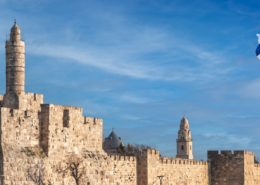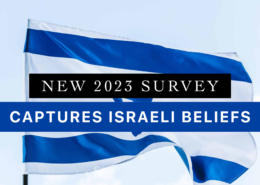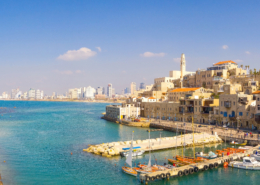Yom Kippur; Repentance and Atonement perfected in Jesus.
Yom Kippur, the day of Atonement
The Bible describes Yom Kippur as a day of affliction (Leviticus 16; 30). Traditionally, the High Priest awoke early on Yom Kippur, donned his priestly garments, and sacrificed a bull for both himself and his family.
He would then cast lots over two goats, choosing one as belonging to the Lord, and designating the other as a sacrifice for the atonement of sin. Only on this day of the year, the High Priest would enter into the Holy of Holies in the Temple, to offer incense and sprinkle blood on the Ark of the Covenant. Before concluding the sacrifices by burning both the bull and the goat symbolically belonging to the Lord, the High Priest poured blood from the sacrificed goat, onto to living one. He then cast the second goat into the wilderness, thus symbolically removing Israel’s sin.
Modern observance of an ancient festival
In modern observance, Yom Kippur involves fasting and abstinence from leisure and hobbies. Many spend the entire day praying in the synagogue. During the ten Days of Awe preceding Yom Kippur, people seek to make amends and repair relationships.
As part of the Yom Kippur service, a prayer called “Al Chet” (all sin) is read, and then the congregation corporately acknowledges their wrongdoing, asking God for forgiveness. According to Jewish tradition, the Book of Life and the Book of the Dead are closed on Yom Kippur, and the fates of those within the books are sealed for the coming year.
The fulfilment of Yom Kippur by Jesus, the perfect and eternal lamb of God
As believers in Jesus the Messiah, we confidently look forward to eternal life, because our names are written in the Book of Life! When Jesus died, the veil separating the Holy Place from the Holy of Holies was ripped in two, symbolically breaking a barrier between humans and the presence of God (Matthew 27:51). Previously, only the High Priest had access to this room, and he only entered it once a year on Yom Kippur.
But now, Jesus’ death allows believers to enter God’s presence, covered in Jesus’ robe of righteousness and the holiness He has imputed to us through his own sinlessness. This is because He entered into the heavenly Holy of Holies, to offer His perfect blood for our redemption (Hebrews 9:11-12). Unlike the Israelites’ annual sacrifices on Yom Kippur, Jesus’ one sacrifice was perfect and eternal, continually providing atonement for us, as we await the day of judgement and Christ’s rule upon the earth. Yom Kippur, for followers of Jesus, reminds us of the certainty of our redemption through the blood of our Messiah and High Priest, Jesus. (Romans 3:23-35)
Salvation for the Jewish people.
Yom Kippur also points us to the ultimate salvation of the Jewish people. The prophet Zechariah spoke of a day when the nation of Israel will indeed recognise her Messiah, and “they will mourn for Him, as one mourns for an only son” (Zechariah 12:10). When the Jewish people recognise Jesus as Messiah, “All Israel will be saved” (Romans 11:26). The Day of Atonement thus reminds us of our own salvation and also looks forward to the salvation of Israel.





